Advice For Entrepreneurs

Short-Term Opportunities May Mask Long-Term Pain: This is a cautionary tale about Prestige Ameritech and its owner, Mike Bowen. The North Richland Hills, TX company is America's number one maker of hospital surgical masks.
 During the 2020 coronavirus crisis, you'd think the company would be working 24/7 to manufacture the one commodity that Americans and the rest of the world want so badly. "But … noooooo," as John Belushi used to say. During the 2020 coronavirus crisis, you'd think the company would be working 24/7 to manufacture the one commodity that Americans and the rest of the world want so badly. "But … noooooo," as John Belushi used to say.
In 2007, Bowen warned that allowing another country to serve as our main supplier of personal protection equipment had the potential to become a national security nightmare. But no one listened. Of the current situation, Mr. Bowen said, "There is 200 times more demand than there is supply. My phone is ringing every two minutes. Every one minute I am getting an email."
The story is that, during an outbreak like this, everybody wants to be his customer. But as soon as an outbreak subsides, some customers dump him and run back to China. The reason? His masks may cost a dime each, but a made-in-China mask might go for only two cents. This time around, Prestige Ameritech is apparently asking new customers to sign long-term contracts before the company accepts their large orders. Most refuse because, as soon as things get back to normal, they'll go back to buying cheapie masks from China. Or some other low-cost country.
The company is in a building originally used by Kimberly-Clark to make medical masks. But that company moved its operations to Mexico. When Prestige Ameritech opened in 2005, it was touted as a great day for the made-in-America movement.
By 2009, Prestige Ameritech had grown strong enough to meet the demand caused by the H1N1 swine flu outbreak. Hospitals promised to stick with Prestige afterward, but later broke their promises. The allure of those cheaper Chinese masks was too tempting. The next year, Bowen and company president Dan Reese had to lay off 150 workers. Bowen recalled that "150 people that saved a lot of hospitals from closing their doors were rewarded by losing their jobs. And that's not going to happen again."
Karl Denninger commented, "When there's an outbreak - like last time, with Swine Flu - he gets orders. He ramps up to fill them. Then the outbreak passes, and guess where the hospitals go? Back to China. This leaves him with capital equipment leases and people. If he doesn't lay them off he goes out of business. If he does lay them off, he gets hammered with much higher unemployment insurance premiums, the leases on the equipment he has no use for" … and almost goes out of business.
It should be noted that many hospitals have outsourced all of their routine purchasing to firms like McKesson, a $200+ billion medical/pharma distribution giant. How much stuff McKesson imports from China is unknown.
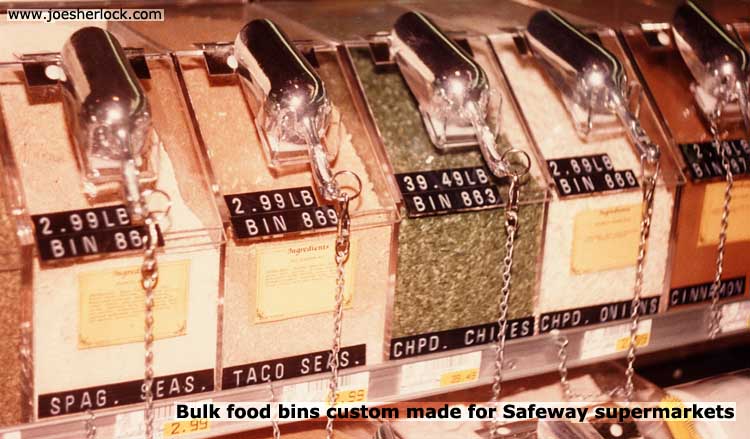
Mr. Bowen's story resonated with me. During the bulk food fad of the 1980s, our plastics manufacturing firm made a lot of custom see-through acrylic bins for big chains such as Safeway. But these large companies soon wanted more: carry ready-to-ship stock, offer turnkey bulk food supplies (scoops, weigh scales, racks, etc.) and provide on-site installation contractors. We felt the market was a fad, so we declined to make investments in workforce and inventory. Other acrylic fabricators chose to jump in. Within a year, the bulk-food craze was over and those who went along with the large supermarkets demands were stuck with unsalable products. I know of several plastics companies that went out of business when demand for bulk food installations evaporated.
We also developed a stock line of acrylic displays, sold through store fixture distributors. There was a great demand for our display products during the late Summer and Fall. Suddenly, distributors who had previously rebuffed our sales efforts, now wanted to be our buddies and buy from us (because their other suppliers couldn't fill orders promptly). Filling their orders would have overwhelmed our already-stressed manufacturing capabilities and made it tough to take care of our loyal customers who ordered throughout the year. We wised up quickly and informed our new 'buddies' that we'd be happy to set up a distributor relationship with them as soon as they placed a $20,000 good-faith initial order - for merchandise to be shipped right after our busy season ended. These fair-weather friends stopped calling us.
The lesson is: Take care of your good repeat customers because they will take care of you. The one-shot, flighty buyers can fend for themselves … elsewhere. (posted 5/4/20, permalink)
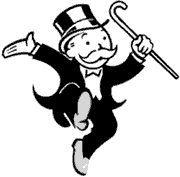 Small Biz Stats: Last year (2019) was reportedly a great year for startup businesses, and 2020 is going to be even better, due largely to continued growth in wellness and high-tech. Here are some interesting start-up and small business statistics: Small Biz Stats: Last year (2019) was reportedly a great year for startup businesses, and 2020 is going to be even better, due largely to continued growth in wellness and high-tech. Here are some interesting start-up and small business statistics:
• There were 30.7 million small businesses in the U.S. in 2019.
• Immigrant entrepreneurs account for 25% of all new businesses in the United States.
• Almost 70% of American entrepreneurs start their businesses at home.
• 42% of startups fail because they offer products or services that the market doesn't need. Or want. This indicates a lack of market research by founders. In my article, 'How To Start Your Own Business In Six Steps', I wrote, "You must develop substantial knowledge about the marketing environment in which your new business will operate:
• What is the market like? (size, dominant players, price points, seasonality, customer mix, etc.)
• What is required - startup capital, expertise, etc.
• How will your startup's offerings fit the documented needs of prospective customers?
• How will you effectively promote and sell when you're just starting? And ... how much will it cost?"
I also wrote, "Read books on marketing and selling. Read at least four of them. Marketing and selling are not the same, so be sure to get books on each. Marketing and selling problems are the largest single cause of startup business failures in the U.S."
• Only 50% of businesses with employees survive five years.
• A 50-year-old startup founder is twice as likely to succeed than a 30-year-old founder. Age does beget wisdom.
• A 60-year-old startup founder is three times more likely to succeed than a 30-year-old founder. Older entrepreneurs are more experienced, more cautious and will do their homework more diligently before starting a business.
Something to think about, eh? (posted 2/5/20, permalink)
The Unbearable Dumbness Of Diversity: A recent article in the Costco Connection carried this headline:

The article urges business owners to become more "culturally intelligent." No measurable benefits are touted. Are there stories told of craggy old white guys who ... (more >>>)
How To Succeed In The Restaurant Business: In the world of new businesses, dining establishments have the highest failure rate of all. Opening a restaurant is complex and capital-intensive compared with many other start-ups. Eateries are typically not high-margin businesses, so there is little room for error. Average pre-tax profit margins range from 2-6% (2% for full-service and 6% for limited-service places like pizzerias).
In my many years as a business consultant, I advised numerous restaurants. Based on that experience, I recommend eight things you must do to achieve restaurant success ... (more >>>)
Business Advice You Can't Refuse: Speaking as someone who spent almost five decades in the business world, the best book (and film) for understanding the workings of large corporations was 'The Godfather'. Some of the great lessons I learned as an employee of a couple of large Corporate Families:
1. Trust no one.
2. Forge strategic alliances.
3. Loyalty counts (sometimes/usually/for a while/when it's convenient for the Bosses).
4. It's not just about product - it's about distribution.
5. Never speak against the Family. (posted 4/27/12, permalink)
Polymer Giants: A recent issue of Plastics Distributor & Fabricator magazine carried the inspiring and almost-Runyonesque story of E&T Plastics. In 1946, Sidney Erman and Rudolf Thal combined their business acumen and their initials to create E&T Plastics. Both were refugees of Nazi Germany.
In its early years, E&T Plastics was confined to an apartment in Harlem where plastic was dyed in the bath tub and shaped by heating it up in the kitchen oven. Due to a lack of raw materials in the aftermath of World War II, E&T's supply of plastic came largely from the recycled canopies of no-longer-needed military aircraft.
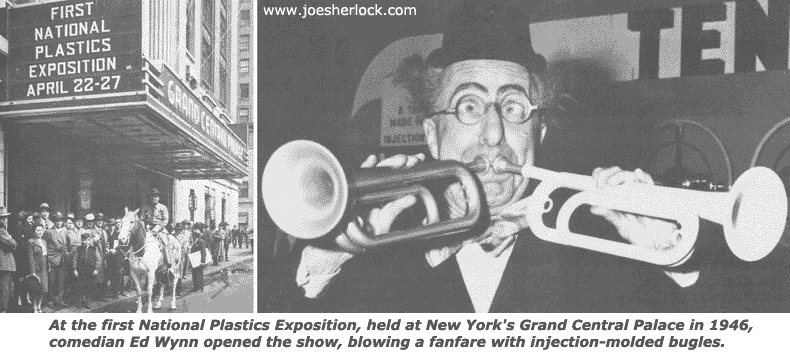
There are thousands of stories like this about early postwar America where budding entrepreneurs creatively scrounged to build what soon became successful businesses. Some grew to become industrial giants and household names. All from humble beginnings.
People today have forgotten that when World War II ended, there were shortages of many items as factories struggled to made the switch to peacetime production. In 1946 and '47, many automobiles were delivered with sawn lumber pieces instead of chrome bumpers. Customers were given IOUs for 'real' bumpers which would be available later.
Meanwhile, Sidney and Rudolf soldiered on in their new homeland and, by 1964, E&T's products were featured prominently in several exhibitions at the New York World's Fair in New York City. The company even made its mark in Times Square in the form of an impossible-to-miss advertisement for Planters Peanuts.
E&T is now a large plastic distributor, fabricator and sign supply house with multiple branches in the U.S. Gary Thal, Rudolf's son, is company president.
There are other tales of industrial heros, who lived by their wits and made the plastics business the gigantic industry it has become today.
In the acrylic plastics field, people like Bob Gardner and Frank Moore became missionaries, getting automakers, appliance manufacturers and other mainstream manufacturing firms to use injection-molded Plexiglas in place of traditional materials. Such men were a generation older than me but I was lucky enough to know them and learn from them. I once carpooled with the legendary Mr. Gardner.
These folks are the unsung heros of modern American industry. We owe them much. (posted 8/22/11, permalink)
Small Business Support: There is a new program at the Vancouver Branch of Washington State University that "links business students with small-business owners." Groups of seniors act as consultants to small business owners, providing outside, objective recommendations for solving problems and improving the business.
The goal of the program is to give a boost to businesses that have the most potential to create more jobs in Clark County, while making the university more relevant to the larger community. "I think it will be incumbent for universities to take their obligations to the community more seriously, because there's not going to be support for an ivory tower," said Joe Cote, professor of marketing at WSU Vancouver who is leading the collaborative effort. "You have to show the value of an institution."
|
|
My good friend Richard represents the classic entrepreneur. He's had his own business of one sort or another for most of his working life. Starting in the late 1960s with a single retail pushcart, he later established his own HVAC firm and now is in the natural gas development biz in West Virginia.
|
This year, several area small businesses were given advice, including a dry cleaner, a bakery, a yacht repair shop, a seminar/training firm and a vineyard. The program has been initially underwritten with $22,000 grant from JP Morgan Chase Bank. It is hoped that the effort can be expanded with increased financial support from the big players in the local business community.
I wholeheartedly endorse this idea. Thirty years ago, my own small business was helped by a similar program at Oregon State University. It was funded by the Small Business Administration. We "hired" students every year for several years to carry out projects that we didn't have the time or expertise to do. We got back detailed studies and recommendations on redesigning our accounting system to better identify the profitability of particular business segments, finding out salaries and wages were needed to be competitive and redesigning our warehouse and shipping area for better efficiency. The students were conscientious and professional in their approach and provided insights and remarkably creative ideas.
Dick Lane, who was then our SBA contact, told me that the program was foundering because small business owners would refuse to participate, apparently "because they didn't want to disclose business internals to students." That's a shame because we never experienced even the hint of confidentiality breach in our many dealings with students and their profs.
I hope the WSU program is successful. Entrepreneurs need all the good business advice they can get. I've tried to provide some on the Business Advice section of this site. (posted 5/19/11, permalink)
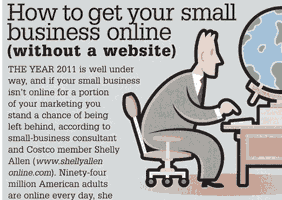 Bad Advice: I enjoy the Costco Connection magazine and there's usually good advice to be had inside, But the article in the May issue about alternatives to websites is just wrong. Bad Advice: I enjoy the Costco Connection magazine and there's usually good advice to be had inside, But the article in the May issue about alternatives to websites is just wrong.
If you're a drywall contractor who only does local commercial work and you only have eight potential customers, you don't need a website. You can build your business based on dinners, drinks and golf games with prospects and clients.
For the rest of us, a website is a necessary way to reach out to potential customers - it is your 24-hour color literature rack, your instantly available curriculum vitae or the always accessible menu for your restaurant.
The author's suggestion about using free online listings with Yahoo et al, various internet Yellow Pages or Local.com as a website substitute is a bad idea and, in my opinion, a waste of time. Get real. Get a genuine web address with your own unique URL. And pay a proven professional to design an effective website. It's well worth the money. (posted 5/9/11, permalink)
The Accidental Entrepreneur: Robert Reich has written that "2009 might instead be remembered as the year business startups reached their highest level in 14 years - even exceeding the number of startups during the peak 1999-2000 technology boom."
One surprise is the age of these new entrepreneurs. Most of the growth in startups was propelled by 35- to 44-year-olds, followed by people 55 to 64. "Forget Internet whiz kids in their 20s. It's the gray-heads who are taking the reins of the new startup economy. At first glance, all this seems a bit odd. Usually new businesses take off in good times when consumers are flush and banks are eager to lend. So why all this entrepreneurship last year?
In a word, unemployment. Booted off company payrolls, millions of Americans had no choice but to try selling themselves. Another term for 'entrepreneur' is 'self-employed'."
"Yes, a growing number of Americans went out on their own before the recession, but clearly their numbers have vastly increased. While some are happy about their new status, most are worse off than they were before. It's one thing to be a contingent worker in good times and when you're young; quite another in bad times when you're middle-aged."
The hot word in the corporate world today is Workforce Transformation. Meaning, you'll now be working for us only when we need you. As a freelancer with no benefits or job security. Popular alternative euphemisms include 'contingent worker' and 'temp independent consultant'.
Like the apprentices and journeymen of old, you're now on your own. The question is, will you spend your days hammering out jewelry in a hovel or will be like the great Matthias Baldwin who leveraged his precision metalworking skills learned as a jewelry apprentice to create the mighty Baldwin Locomotive Works, which in 1837 - just after the birth of the steam locomotive - employed over 300 people.
By 1907, Baldwin was the world's largest locomotive manufacturer and the biggest employer in Philadelphia, with 18,500 workers.
I have posted a number of articles designed to help those Accidental Entrepreneurs. You'll find them listed here. (posted 6/14/10, permalink)
Make A Profit On Everything You Do: There's a management theory that says it doesn't matter if Safeway, Kroger (or any business) makes a profit on every tomato it sells, as long as the grocery chain makes an overall profit. This theory has been used for everything from filling airline seats or motel rooms at ridiculously cheap prices to creating 'loss-leaders' (items sold at prices below cost) at retail stores.
There are six problems with selling anything below cost:
 1. You need very sophisticated tracking mechanisms to measure, restrict and control sales. If everyone only goes to Safeway to buy loss-leader tomatoes, Safeway will go bankrupt. Therefore, much time and energy must be expended to measure (and, ultimately, restrict) tomato sales. Most small businesses don't have the time or ability to track such information. Most large companies have the ability, but don't use it. Or don't know how to use it. 1. You need very sophisticated tracking mechanisms to measure, restrict and control sales. If everyone only goes to Safeway to buy loss-leader tomatoes, Safeway will go bankrupt. Therefore, much time and energy must be expended to measure (and, ultimately, restrict) tomato sales. Most small businesses don't have the time or ability to track such information. Most large companies have the ability, but don't use it. Or don't know how to use it.
2. Any time you offer anything below cost, you attract the worst kind of customers - price shoppers. These folks have no loyalty and buy strictly on price. And, their very presence may drive your good customers away. When the airlines began filling their seats with super-discounted fares in the early 1990s, one flight attendant remarked, "We are now getting rude, smelly people who have no manners and used to ride Greyhound. Now they ride with us and are driving our (full fare-paying) business customers away."
3. Loss-leaders are often bigger loss leaders than companies may think. Buying tomatoes for 34¢ and selling them for 29¢ doesn't tell the whole story. By the time you add in the cost of delivery, unpacking, in-store placement, etc., that 34¢ tomato may end up costing 49¢. Suddenly, a small loss-leader becomes a bigger one.
4. Once you've started selling 29¢ tomatoes, you begin to give yourself a reputation. It will be very hard to convince your present customers to pay 49¢ for the same item. I am convinced that many of the problems at Nordstrom have been caused by the 'success' of Nordstrom Rack. Racks were started as a way to offload out-of-season and obsolete merchandise at hot, discount prices. Now, everybody that I know checks the Rack for 'deals' before they go to Nordstrom and pay full-tilt retail. When Midwest department store chain Dayton-Hudson decided to start a discount division (many years ago), they used a different name - Target. With good reason - they didn't want to cannibalize sales from their full-service stores.
5. There's a certain cynicism among buyers which is brought out every time they're exposed to a 'loss-leader'. They're sophisticated enough to know that, if you're taking a loss on one item, you're probably overcharging them elsewhere. Your firm is now perceived as less-than-honest to them.
6. It is well-known that the cost of 'investing for the future' (new machinery, expansion, new promotional materials, etc.) is ever-increasing. It's driven by competition - companies which are always making improvements. How can you invest in the future if you have a negative return on investment? You can't, yet that's exactly what unprofitable offerings provide.
In my manufacturing company, we only offered discontinued, hard-to-get-rid-of items at less-than-cost prices. Everything else was priced to make a profit; even though several of our competitors offered 'loss-leaders.' Many of our customers told us that they went to our competitors strictly to buy loss leaders, but bought everything else from us because we offered better service. We could afford to provide better service because we were making more profit than our competitors.
|
|
Loading a trailer with freshly-manufactured, boxed Plexiglas store fixtures on shrink-wrapped pallets in 1985, using our ancient 1955 yellow Hyster forklift in Tangent, Oregon.
|
Make a profit on every product or service you offer. It's the key to long-term success in business. (posted 6/3/10, permalink)
 "Please Leave A Message; Your Call Is Really Important To Us." The National Federation Of Independent Businesses has reported that small businesses overwhelmingly continue to cite 'Poor Sales' as their number one problem. "Please Leave A Message; Your Call Is Really Important To Us." The National Federation Of Independent Businesses has reported that small businesses overwhelmingly continue to cite 'Poor Sales' as their number one problem.
Recently, a friend in Pennsylvania suffered storm damage - six trees came down, two fell on his house. He immediately contacted general contractors and tree removal services. Most of his calls were unreturned.
I experienced the same problem when our lawn care service unexpectedly closed. With 14+% unemployment around here, you'd think landscape businesses would be hungry ... but noooooo. I figured I'd only have to make a couple of calls but, so many companies were unresponsive, that I ended up contacting seven businesses. Some never called back. Or were slow to respond. Or showed up and then never got back to us with the promised quote.
Then there are those firms which leave customers and prospects on hold forever:

These are the same people who will complain about how poorly their businesses are doing and will list "poor sales" on NFIB surveys. They are their own worst enemy.
Sometimes it's hard to be sympathetic to the plight of small business when so many owners are idiots. (posted 4/26/10, permalink)
The Legacy Of William B. Stout: William Bushnell Stout was a prodigious engineer and inventor. Aviation historians know him as the builder of the 1919 Batwing, which was the first commercial American monoplane and as the father of the Ford Trimotor airplane. The Trimotor was the first production passenger airplane designed with a metal skin instead of cloth, wire and wood. In a way, Bill Stout helped to create commercial air travel by developing a reliable commercial aircraft made with durable materials.
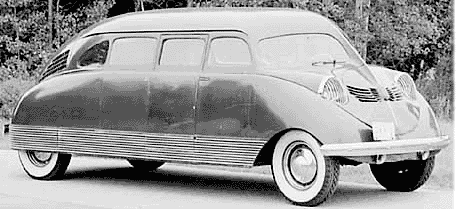 Automobile buffs may remember the Stout Scarab of the early 1930s. This unique vehicle is the grandfather of today's modern minivan. Bill Stout's Scarab had many futuristic features not seen in other '30s cars such as four wheel independent suspension, hidden door hinges, push button door locks, flush glass, fully enclosed wheels, no running boards, and flush aero headlights. Automobile buffs may remember the Stout Scarab of the early 1930s. This unique vehicle is the grandfather of today's modern minivan. Bill Stout's Scarab had many futuristic features not seen in other '30s cars such as four wheel independent suspension, hidden door hinges, push button door locks, flush glass, fully enclosed wheels, no running boards, and flush aero headlights.
As an inventor and small business owner, Bill Stout offered some words that are applicable to today's entrepreneurs. Bill said, "Never resort to mathematics until you have exhausted all the possibilities of a couple of toothpicks and a piece of string." What Bill meant is you don't need to analyze a new idea to death; frequently, you can try some low budget experiments to test your idea.
If you're in the restaurant business and you want to add some ethnic food items to your menu but you're not sure if your customers are interested, you can print up a small run of special item menus and clip them to your regular menus. Then you can measure what people order and determine the popularity of these dishes. You can keep experimenting until you find a combination that works. Cactus Ya Ya, a well-known restaurant in Vancouver, specializes in Mexican and Southwestern cuisine. They also offer eclectic fare such as garlic mashed potatoes, Southern cuisine and Philadelphia cheese steaks. It works for them.
In the wholesale segment of my plastics business, we decided to try a price-cutting tactic to see if we would gain more business. We registered a fictitious name, placed a small ad in the yellow pages and put in an extra phone line with its own number. Then we placed a small ad in the yellow pages. Our slogan was "Before you buy, call us for a quote!" We were disappointed in the results of the campaign and axed it a few months later. Nevertheless, it was an economical experiment, costing less than $700, that didn't sully the name of our regular business. We moved on to more promising programs, but at least we had tried another tactic.
Mail order experts say you can't accurately test the statistical pull of a mailing list or an offer unless you mail at least 5,000 pieces. That's true, but if you send, say, 500 pieces and you get some response then, by all means, scale up and do a full-blown test. If you get absolutely no response, the market is telling you something. Shut down your direct mail program and re-think it. Is there a problem with the offer in your mailing? Or maybe you've got a bad mailing list. Think about it before you spend more money.
If you've got a new product idea, you don't need to fly all over the nation to try it out. Chances are there's someone within easy driving distance of your office who's a potential customer for your idea. Buy them lunch and solicit their opinion. They'll probably be flattered you asked and will likely provide you with valuable feedback.
Before we ever embarked on filling a production order for point-of-purchase displays in our plastics business, we made a hand-made plastic prototype to get the OK from our customer. Before we did that, we made a "quick and dirty" sample out of cardboard and masking tape, using a box knife. It only took us a few minutes but it told us whether the proportions were right, the size made sense and whether the part was stable enough so it wouldn't tip over. These were all things you couldn't tell from a two dimensional sketch. While we were using cardboard and masking tape instead of toothpicks and string, we were following the philosophy of the legendary Mr. Stout.
Bill Stout's lesson is very applicable to running your own business. Don't be afraid to experiment, especially if it doesn't cost much to do so. Don't wait and vacillate. Try something new ... now. (posted 11/18/09, permalink)
Entrepreneurs & Money: Gregory Sullivan at Sippican Cottage has written, "The world is rather a harsh place for true entrepreneurs just now, much more so than for people that are gaming some system for money, which has become the Holy Grail of angel investors. I've learned everything in this life the hard way, and the hardest lesson to learn is to only borrow money - which includes accepting capital for a piece of the action - to expand on something that already makes money."
Here's what I learned from owning my business: you'll make the smartest decisions when it's your money at risk. You'll buy garage sale office furniture and put the money you saved into promotional activities to snag more customers so you can someday buy a better desk.
|
|
| On a cold, foggy late-Fall Oregon morning in 1978, we watched as our first plastic vacuum-forming machine was delivered. It had traveled cross-country from the manufacturer in North Carolina and was our first major equipment investment. Within a month, it was generating cash, producing electronics cases.
One of our earliest customers was a start-up firm, Flir Systems. This manufacturer of infrared devices is now a publicly traded S&P 500 company with annual sales exceeding $1 billion.
|
Since it's your money, you'll quickly learn that cash flow is King. Real money now - even if you have to offer a discount to get it - is much better than pie-in-the-sky monetary promises that may never materialize. Or unpaid, past-due invoices thanks to recalcitrant, deadbeat or ungrateful customers.
Matt Blalock at 37 Signals has written, "Most of the people I know who are money-making-machines got started really early. Lemonade stands, car washes, lawn mowing, baseball card trading. I think the reason they are money-making-machines today is because they started early. They learned the skills of negotiation, pricing, selling, and market-reading early. They have more practice selling than most people. That's one of the reasons they're better at it than most people."
Makes sense to me. I had my own lawn-cutting customer route by the time I was 12. I also support the "have more practice selling" comment. When you have a really small business, you are the salesperson. You can't hire someone to do it for you; no good sales rep would ever work for your miniscule, risky firm. A sales type with any talent can easily find good-paying work at a larger, more stable business. If you can't sell, your chances of success in a small business are very low. I've seen hundreds of small businesses fail due to lack of sales, caused by the owner's inability to sell. Or his/her aversion to selling.
Scott Shane, Professor of Entrepreneurial Studies at Case Western Reserve, has noted sadly that too many small businesses "are started by unemployed or underemployed individuals who are motivated to do so partly by government incentives (e.g., government small business loans, grants, training and other encouragement) and by the relatively low opportunity costs for them of starting a small business, due to their current employment status."
Such people don't have their life savings and souls invested in their venture and have neither the motivation nor tenacity to hang on and keep trying until something works.
Every year, my business partner and I would write an annual business plan for our manufacturing company. We'd begin by writing a narrative, listing all the things we wanted to accomplish in the next 12 months. Then we'd start running the numbers, projecting income and expenses for the next year.
That gave us a reality dose - there was never enough money to meet all those goals in the narrative section. We were forced to prioritize, choosing only those affordable items which we thought would provide us with the best return. We'd then rewrite the Narrative Section to reflect our financial reality and match up with the Numbers Section of our business plan. This forced us to be smarter entrepreneurs and made our company more profitable.
Gregory Sullivan also wrote about using money to "expand on something that already makes money." That's an important point. I think our financially-forced prioritizing did that. We had so many pretty-much proven business segments to expand that we were unwilling to spend much on unpredictable dreams.
For every Bill Gates or Steve Jobs who succeeds by doing something which hasn't been done before, there are 100,000 poor souls who have tried to open the world's first combination gourmet restaurant and radiator repair shop or a beauty salon for iguanas. If your business concept is really viable, somebody else somewhere is probably already doing it and making money at it. If you can't find such people, it probably means your idea sucks.
I've seen a lot of companies that were funded by Other People's Money (venture capital, outside passive investors, etc.) that wasted money on trivia - fancy lobbies, poofy, expensive but ineffective brochures, fees paid to consultants to develop mission statements, etc.
Whenever I'd visit a start-up company which had a great-looking lobby, I'd get very nervous about doing business with them. I've seen too many companies where their scarce funds had been spent on a buffed-up waiting room - trendy paint schemes, expensive leather couches, marble accents and such - instead of spending it on product development or service infrastructure. This was a signal that the owners were making foolish financial decisions. In most cases, the company failed in a relatively short period of time.
If you're dumb enough to hire a decorator to 'do' your lobby while you're starving the rest of your company, you're probably doing a lot of other stupid things, too.
Use your own money. You'll spend it wisely. Because you have to.
PS: Here are six things you should do before you start a business. (posted 11/11/09, permalink)
copyright 1997-2021 - Joseph M. Sherlock - All applicable rights reserved
Disclaimer
The facts presented here are based on my best guesses and my substantially faulty geezer memory. The opinions expressed herein are strictly those of the author and are protected by the U.S. Constitution. Probably.
Spelling, punctuation and syntax errors are cheerfully repaired when I find them; grudgingly fixed when you do.
If I have slandered any brands of automobiles, either expressly or inadvertently, they're most likely crap cars and deserve it. Automobile manufacturers should be aware that they always have the option of giving me free cars to try and change my mind.
If I have slandered any people or corporations on this website, either expressly or inadvertently, they should buy me strong drinks (and an expensive meal) and try to prove to me that they're not the jerks I've portrayed them to be. If you're buying, I'm willing to listen.
Don't be shy - try a bribe. It might help.
|
|